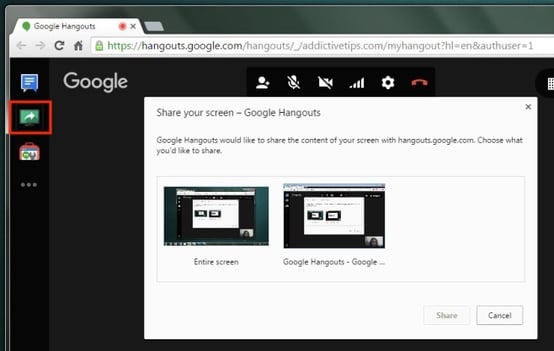“I’m not comfortable putting my name on this.”
I received this comment once from a colleague at a previous employer, responding to an article I wrote for him under his byline. But when I dug in, I found that his issue with the piece were a few small errors that were easy to fix. Sweeping remarks like “I don’t like it” were common at that job, and they often arrived with little direction by the author for how to revise.
This criticism was so disheartening, there came a point where I’d actively avoid writing for certain people because of how they expressed their feedback.
The reason my colleague’s comment struck a nerve with me isn’t because I’m a delicate flower who can’t take being told my work is insufficient. It’s because it wasn’t constructive. Feedback to a writer needs to — among other things — highlight the first draft’s specific flaws, its strengths (however few there might be) and the goals of the assignment. Otherwise, the writer has no incentive or means to improve.
This was a guidepost for me when I worked as a content editor, and being on the other side of the writer-editor relationship showed me just how valuable good feedback can be to a writer’s motivation and final product. The problem is, even if your intentions are good, feedback can still come across as aggressive or confusing to a writer if it’s not delivered, packaged, or expressed correctly.
Whether you’re reviewing the work of a ghostwriter, freelance writer, or even a direct coworker, here are five tips I’ve picked up as both a writer and editor on giving constructive feedback to the people who create content for you.
1. Comment on the Good Qualities First
I can attest to how tempting it is to end a business relationship with those who only mention what you did wrong. Harvard Business School found a similar trend: In a study of 300 U.S.-based employees, a person was 44% more likely to disassociate from a colleague who gave them feedback that was more negative than the recipient’s self-evaluation.
So, how do you call out the bad parts of someone’s work without sounding like a jerk? Start with the good parts. Introducing feedback on a piece of content with what it does well accomplishes three things for the writer:
- It fuels their motivation to approach revisions and new assignments.
- It gives them a vantage point for where their work fell short.
- It tells them what’s working and what they should keep doing.
If you struggle to find strengths in a writer’s first draft, don’t be afraid to broaden the subject of your praise. For example, if an article on search engine optimization (SEO) is full of advice based on an outdated version of Google’s algorithm, clarify that the writer was right to include such a thorough variety of SEO tactics, as this will make the final article that much more valuable.
2. Call Out a Recurring Mistake Right Away
As a copy editor, I had a bad habit of waiting 10 articles before telling a writer about a mistake they kept making. It was just easier fixing it myself instead of sending it back to them — so easy that I eventually forgot I’d already fixed these things in previous content. Unfortunately, this became exhausting, and when I finally informed a writer of an error, it didn’t go over well.
Don’t follow younger Braden’s example.
No matter how easy it is in the short term for you to correct chronic flaws in a writer’s work, you’ll eventually want them to learn the right way of doing it in the first place. But when you wait multiple occurrences before flagging the issue, you can cause a lot of confusion. “Why now?” The writer might ask you. “Do you have a new style guide that enforces this?” An awkward “er … not exactly” is sure to follow.
In addition, failing to call out issues in their work right away compromises their trust in your feedback. If you want a writer to listen to your feedback, you need to be honest about their mistakes, 100% of the time.
If you notice a recurring error in a writer’s work, address it on-sight. This solves the problem before it becomes a habit and makes the writer more attentive to the guidelines of their assignment.
3. Provide a Style Guide or Cheat Sheet
Speaking of guidelines, give your writer some. Even if the only editorial parameters you have in place are the Associated Press (AP) Stylebook or the Chicago Manual of Style, make sure this material is in your writer’s hands.
Stylebooks enable your writer to refer to this material instead of reaching out to you every time they’re unsure of something. It also allows you to back up any constructive feedback they might be skeptical of directly via official directions they already have in their possession.
Does your writer’s assignment call for project guidelines that are more complex or specific than AP or Chicago style? Package these heavier guidelines into a PDF ebook that you can distribute to new content creators as they join your ranks (get some ebook design templates here). Here’s one idea:
Use these templates as way to organize the company-specific editorial issues and questions you know will come up frequently.



Here are a few ideas of what you might include in such a guide:
- Target audience. Who’s your intended readership? Outline your target buyer persona here so your writers can make sure everything they create benefits this person.
- Product info. How should writers refer to your products or services? Details could range from spelling, to capitalization, to which writing topics are associated with which products — ensuring any calls to action are directed toward the right conversion paths.
- Competition. Who are your competitors? List each one, and detail how you prefer they be referred to (or not).
- Tone. What tone should your writers take in their writing? Company blogs need to distinguish themselves by talking in a way that resonates with their audience. You might compare your tone to a real-life figure and their style of speech to make a tone guideline more concrete. Perhaps they’re especially formal — or somewhat snarky.
In addition, take this opportunity to include company exceptions to either the AP or Chicago style guides. Professional writers tend to base their writing style on one of these stylebooks, so use this as a benchmark for your writers as they create content, but don’t hesitate to include exceptions as you see fit.
For example, AP’s stylebook forbids use of the oxford comma (the last comma in a list of three or more items), but you might decide you prefer having it throughout your website. Note exceptions like these in your cheat sheet.
4. Include Edits With Your Revision Requests
Which YouTube video would you rather watch: Someone describing how to play guitar, or someone holding a guitar and demonstrating each chord? The latter, right?
The same goes for feedback on writing. When pointing out a weakness in the text, offer a sample fix.
For example: Let’s say you’re reviewing a post that links out to various sources, but none of those hyperlinks use the name of the source as their anchor text — a policy of yours in this hypothetical situation. Don’t just describe the issue the way I just did; call out the problem and then fix it for them in a comment once or twice so they know what you mean.
According to Moz, “anchor text” is the clickable word or phrase attached to a hyperlink (see what I did there?).
Going out of way your way to suggest a fix not only gives the writer context for the errors you’ve identified and help correcting them, but it also shows you’re genuinely interested in seeing a successful final draft — to the point where you’ll put in some sweat and effort of your own.
5. Supplement Written Feedback With a Verbal Introduction
When I was a freelance writer for an SEO agency, I had minimal contact with the editor, and that made it difficult for me to find encouragement in the tone of their written comments. By contrast, I regularly met my editor in person while writing for an environmental company and I was always motivated to execute on each request for revision.
Calling or video-chatting a new freelancer — or even an in-house hire you won’t meet with regularly — is more important to a working relationship that you might think. Doing so for a new writer establishes a rapport and shorthand that can go a long way toward the writer’s cooperation and understanding as you begin to assign more work to them.
It also makes them more comfortable calling or approaching you if they’re unsure about a piece they’re working on. This can prevent long periods of email tag and ensure both parties stay on task.
After receiving a first submission from a new freelancer, for example, try this:
- Put aside time to talk it over with them in person or on a video-conferencing platform that allows you to share your computer screen.
- If you have a Gmail account, Google makes it easy to share your screen on a Google Hangout video chat. See the screenshot below; the red square to the left shows the “share your screen” option — then you select the screen you’d like to share with the writer to the right.
- Chat for a few minutes about work history and other personal topics.
- Then, share your screen with them so they can see your markup of their submission.
- Casually chat through your feedback on the document line by line, regularly pausing for questions or checks in understanding.

Setting the table like this can present you with opportunities to bring your writer’s professional background into your feedback so they better understand your criticisms. Are they also a photographer? Consider how you might translate editorial issues related to clarity and subtext — things that are relevant to photographs as well — for someone who you learn works in more than one medium. It pays serious dividends throughout your business relationship, I promise.
Writers can be quite attached to their words, which means it’s critical that you pick yours carefully. At the same time, even great feedback can lack a few critical ingredients for it to truly benefit a writer. What did you think of this article? Tell me on Twitter (I can take it).
![]()







1 Comment